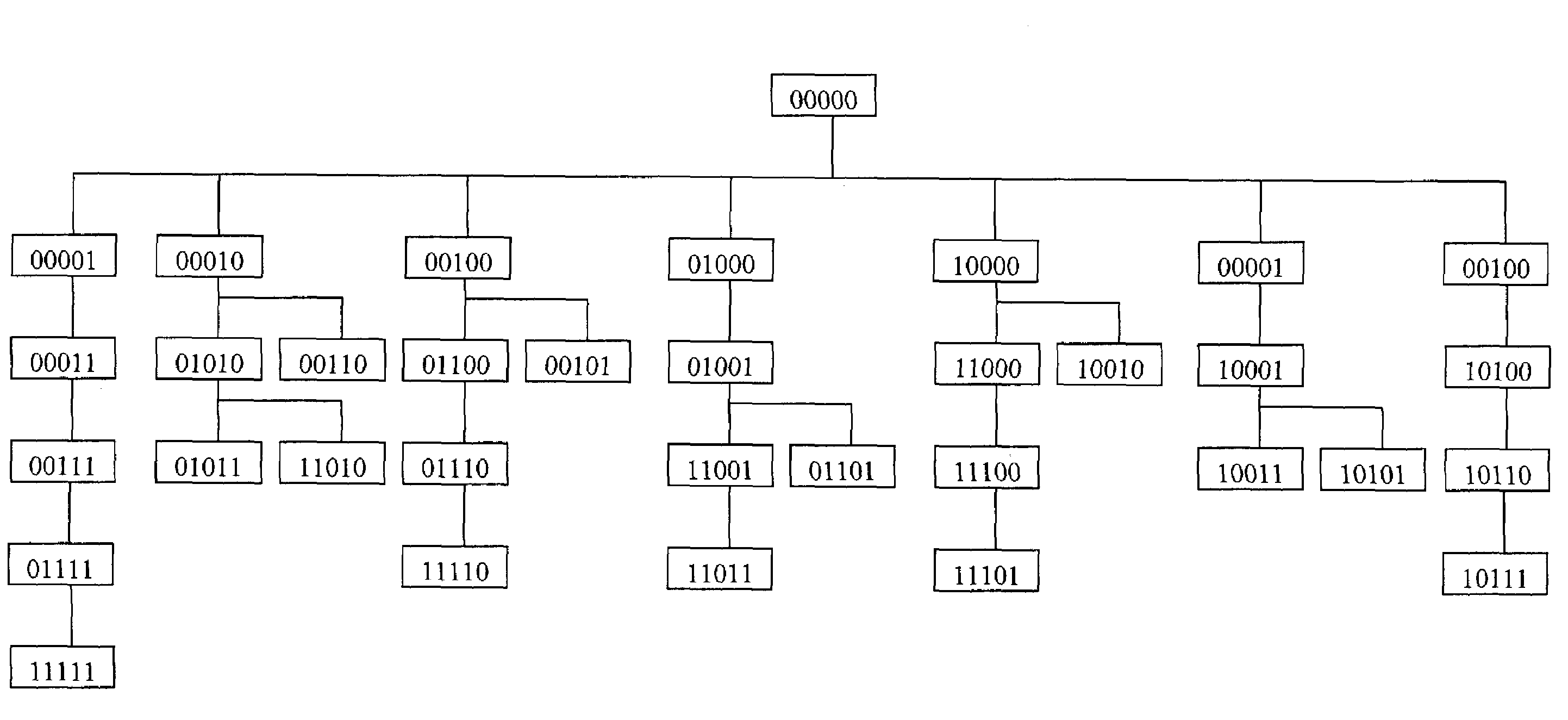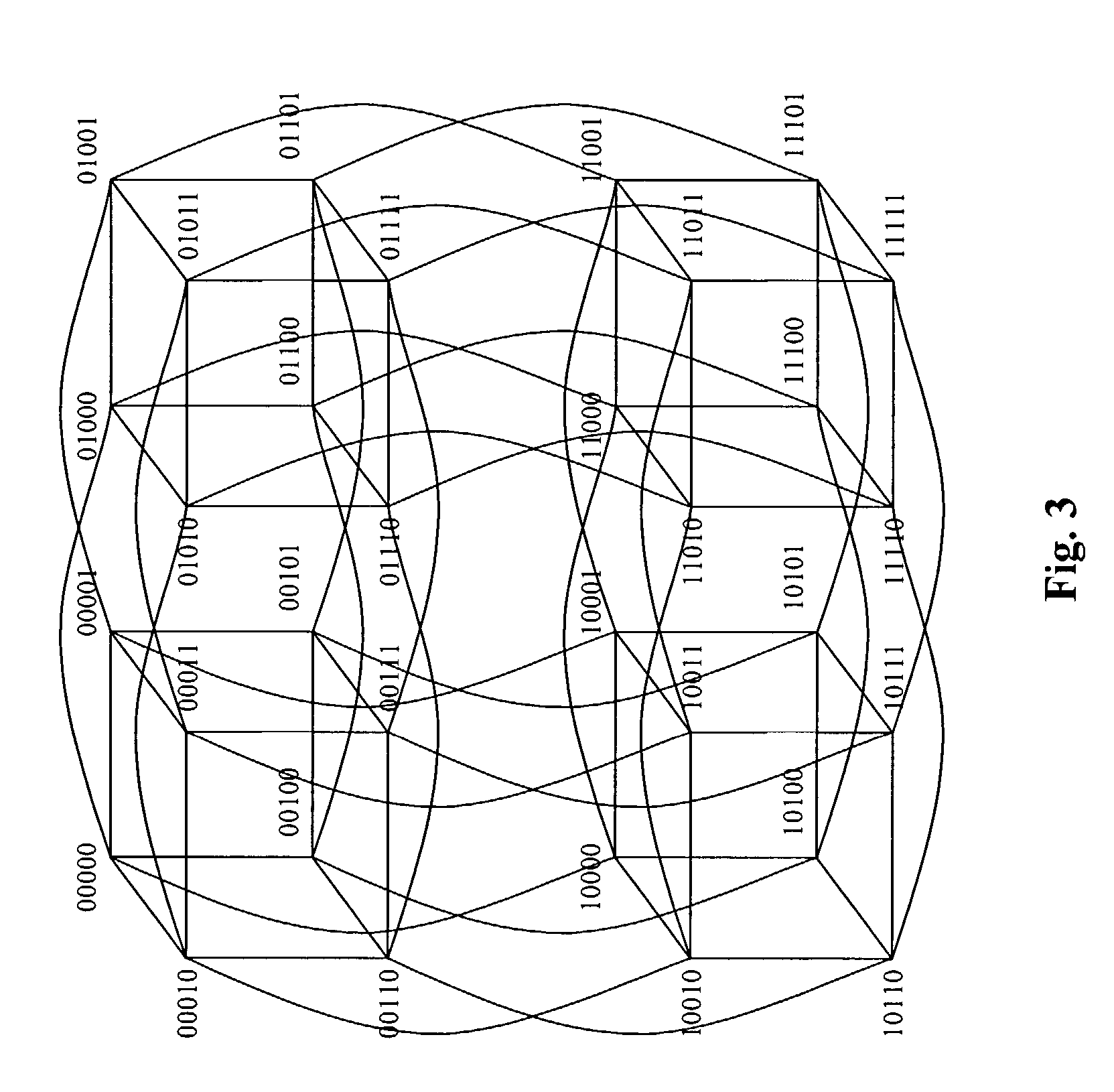Non-blocking WDM optical networks
- Summary
- Abstract
- Description
- Claims
- Application Information
AI Technical Summary
Benefits of technology
Problems solved by technology
Method used
Image
Examples
case 1
[0057
[0058]N2εSJ(N1)
[0059]In this case N2 will be in MSTJ(N1) (and N1 will be in MSTJ(N2). However, none of the other nodes in SJ(N1) (other than N2) will be in MSTJ(N2) by Lemma 1. Thus, if a collision is to occur, it must involve the call on wavelength J to N2. However, this call will traverse edges from N1 to N2 following MSTJ(N1) that are of opposite direction from those in the N2 to N1 paths in the MST (N2). This will not result in blocking.
case 2
[0060
[0061]N2∉SJ(N1)
[0062]In this case MSTJ(N2) does not include N1 and MSTJ(N1) does not include N2 (i.e., N2∉SJ(N1) and N1∉SJ(N2)). The proof by contradiction is similar to that for Theorem 1, but is stated here for completeness. Assume that there is a collision on the dimension r link N3→N4 where N3 εSJ(N2) and N3 εSJ(N1) Because no dimension is repeated in any MST by virtue of the tree construction, this can only occur if N1=N2. Since N1 and N2 were assumed to be distinct we have a contradiction, thus proving the lemma.
[0063]Thus the two operations are non-blocking with respect to one another.
[0064]Theorem 4 Any two broadcast operations from N1 and N2, N1≠N2, are mutually non-blocking.
Proof: The proof follows directly from Lemma 3 since the broadcast from N2 is the union of disjoint multicasts using different wavelengths, and since j was selected arbitrarily.
[0065]Theorem 5 All-to-all broadcast operations are non-blocking under the reported SBT construction and RWA procedure.
Pro...
PUM
 Login to View More
Login to View More Abstract
Description
Claims
Application Information
 Login to View More
Login to View More - R&D
- Intellectual Property
- Life Sciences
- Materials
- Tech Scout
- Unparalleled Data Quality
- Higher Quality Content
- 60% Fewer Hallucinations
Browse by: Latest US Patents, China's latest patents, Technical Efficacy Thesaurus, Application Domain, Technology Topic, Popular Technical Reports.
© 2025 PatSnap. All rights reserved.Legal|Privacy policy|Modern Slavery Act Transparency Statement|Sitemap|About US| Contact US: help@patsnap.com



